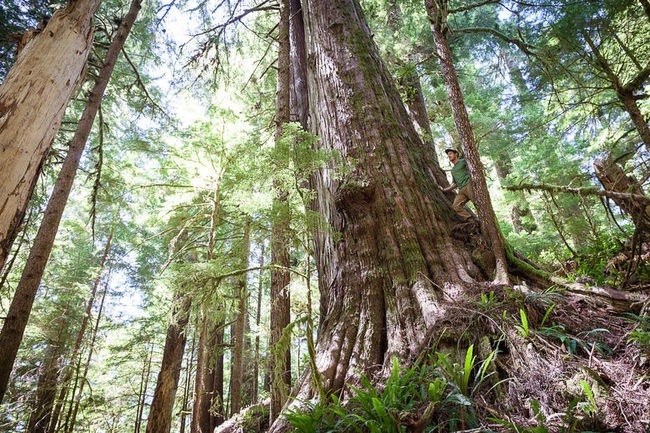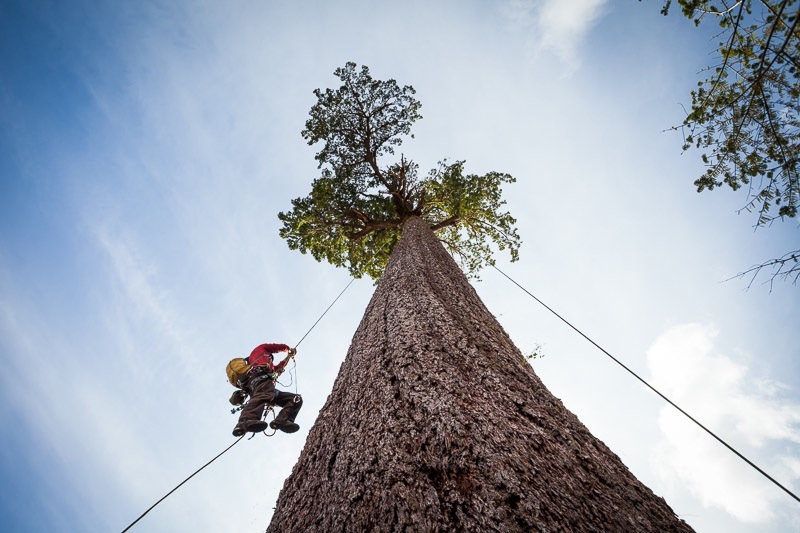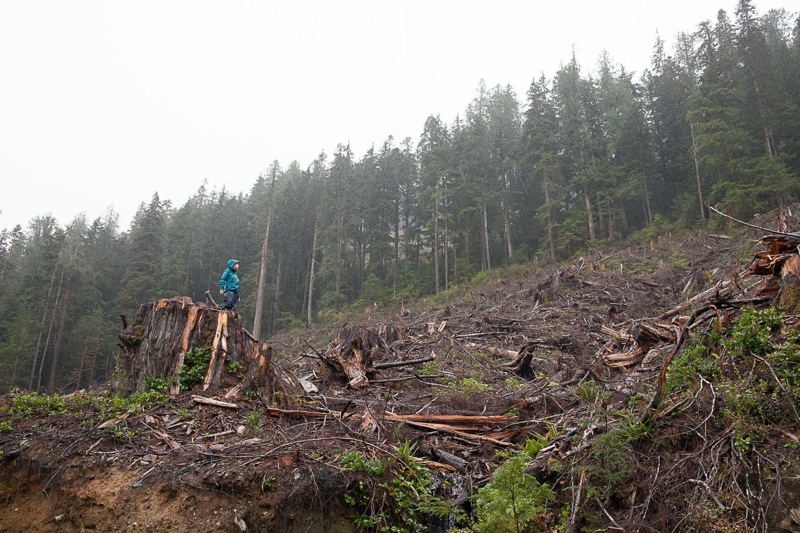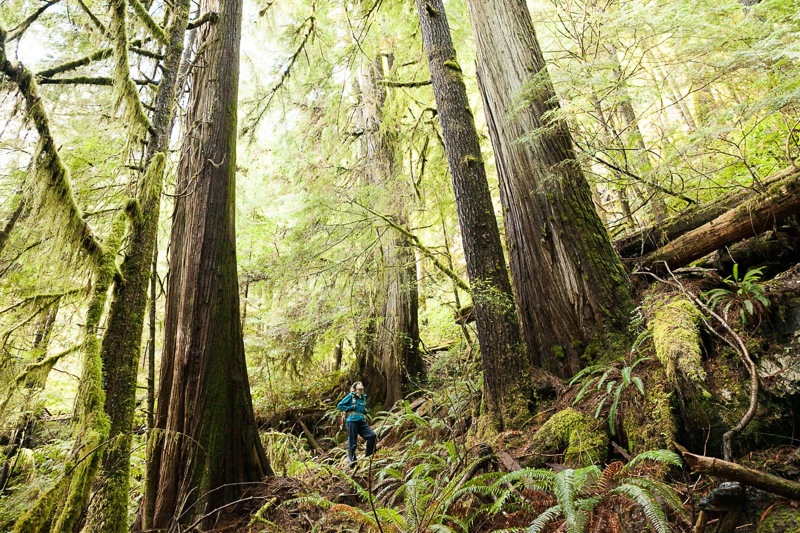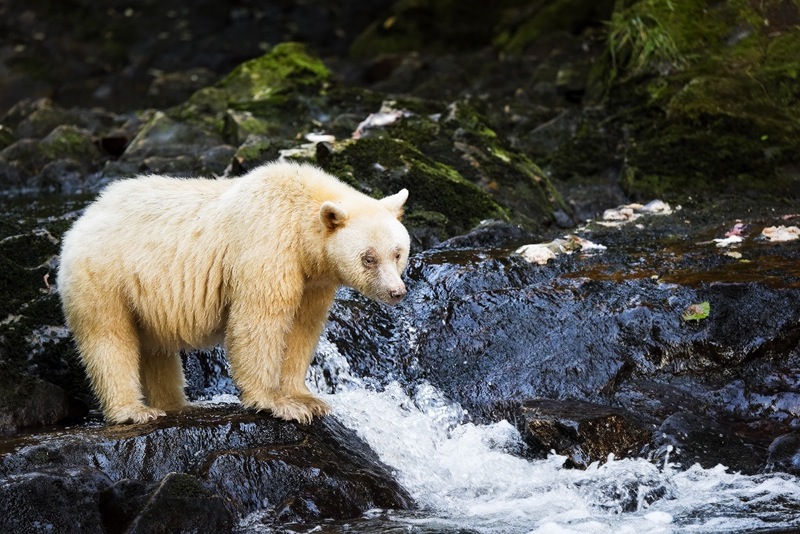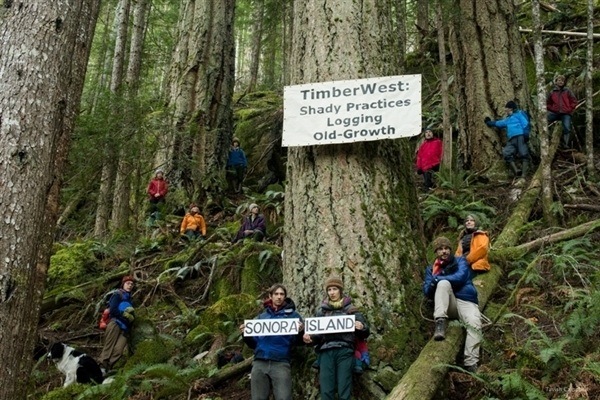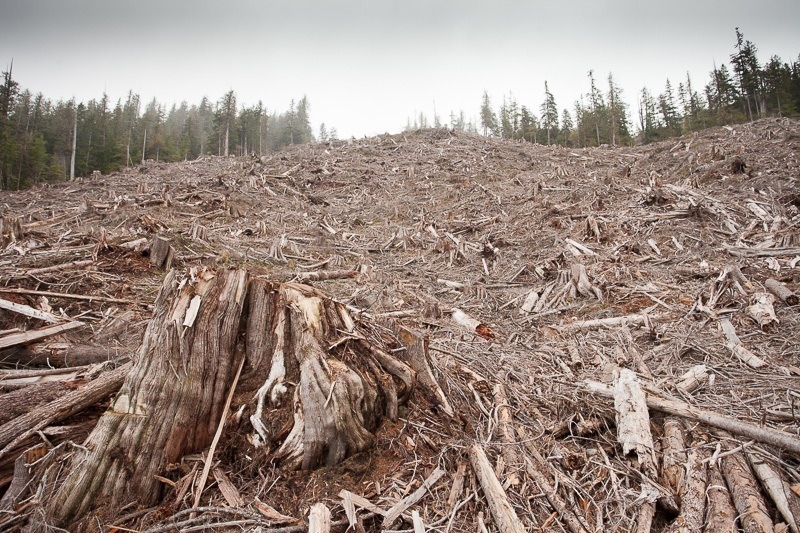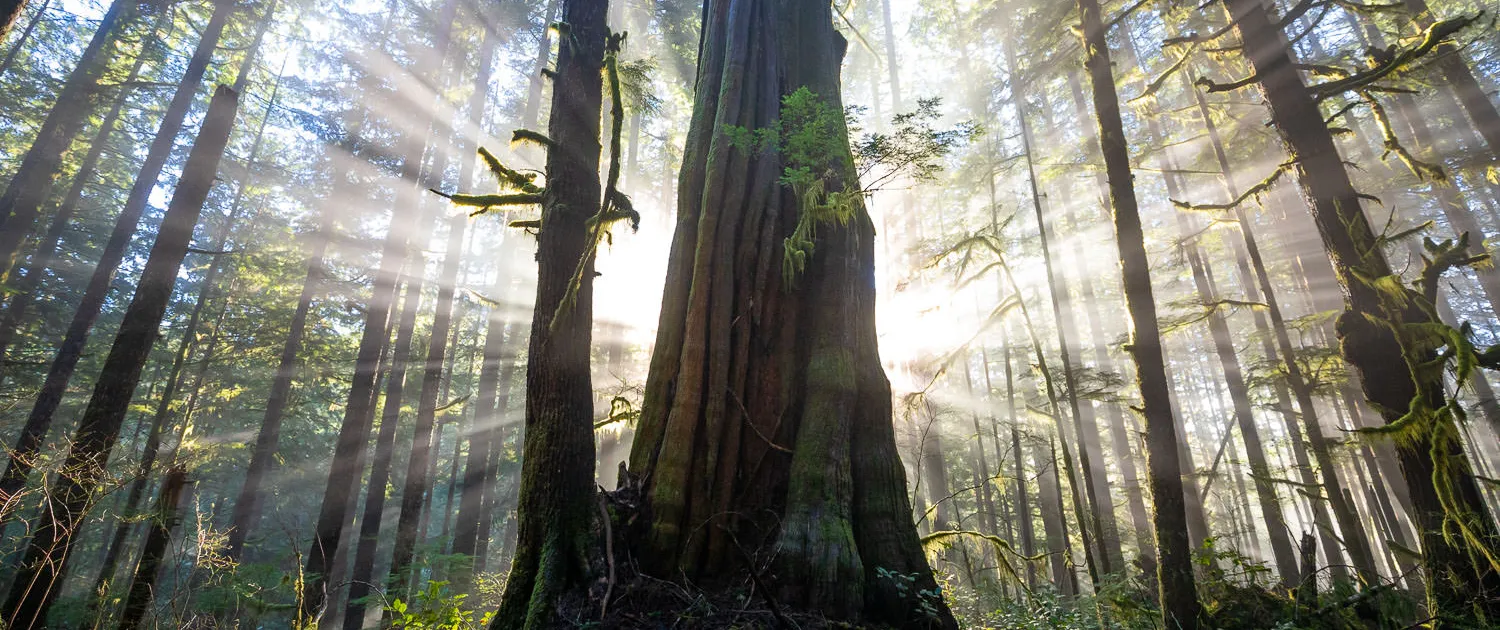In 1991, Western Canada Wilderness Committee (WC2) campaigner, Torrance Coste, was a three-year-old growing up in Lake Cowichan. Barrelling through his community at the time were logging truck loads of old-growth logs coming out of the Walbran Valley and buses of protestors coming in. “I even remember the hand-painted signs: ‘No raw log exports’ which I could just about read.” Coste adds, “Though I didn’t have a clue what they meant then, I do now.”
On one of the buses of protestors was Ken Wu, a 17-year-old first-year biology student at UBC, fresh from the prairies and new to activism. Ken was dropped into a grove of old-growth western red cedar and spruce and, according to Wu, “I lost my ecovirginity.” He returned to UBC and organized his first rally to save the old growth of Walbran. One hundred people turned up and he has continued organizing ever since, first as a campaigner for WC2 and then under his own banner of the Ancient Forest Alliance.
After years of protest in the late 1980s and early 1990s, the BC government bowed to public pressure and created Carmanah Walbran Provincial Park by purchasing back Tree Farm Licences from MacMillan Bloedel for $83.75 million. But not all the valley’s forests were saved.
Now the Walbran is poised once again to become ground zero for the latest “war in the woods”—civil disobedience in the form of peaceful blockades of logging. Environmentalists are condemning the plans of Teal Jones Group—a logging company that has held Tree Farm Licence 46 since 2004—to log in the Central Walbran Ancient Forest. The eight cutblocks proposed are in the controversial “bite” out of Carmanah Walbran Provincial Park—literally a big chunk of very high value western red cedar groves left outside the park when the boundary was drawn. The cutblocks are near hiking trails that lead to massive old trees, including the 1000-year-old Castle Giant, more than five metres across at its base. The BC government has approved Teal Jones’ Forest Stewardship Plan, although it has yet to receive plans or issue permits for the cutting.
Coste believes that if it hadn’t been for early campaigners, nothing of the Carmanah/Walbran forests would have been saved for his generation. So he asked himself what his generation is going to save for the next. “We are going to revive the war in the woods. Every time there has been a presence, changes are made. There is a willingness to make the Walbran this year’s Burnaby Mountain. Of course,” he adds, “we would prefer to see this resolved by government action rather than blocking roads.”
The Sierra Club of BC is also wading in, brandishing facts and figures. In 2004, the Sierra Club produced a map of what was left of productive old growth temperate rainforest on Vancouver Island. A decade ago, 90 percent of the valley bottom forests, where the biggest trees were, had already gone. Not surprisingly, things have only become worse in the last decade. It is a finite resource. Jens Wieting, forest campaigner for Sierra Club, who has also been on this file for most of his professional career, says his frustration comes in a variety of forms. Although new conservation-oriented economic tools exist in BC, such as those being implemented in the Great Bear Rainforest which allow for 70 percent protection of the landscape, no such effort at conservation is happening on Vancouver Island. “Ten percent protection of these temperate rainforests, which have the highest sequestration rates of carbon in the world, is not enough,” notes Wieting.
The old Vancouver Island Land Use Plan, which was never properly implemented, hasn’t been updated for two decades. After being eaten away by industry, bit by bit, only 10 percent of the entire land base has been set aside in a fragmented collection of parks, Old Growth Management Areas, Wildlife Habitat Areas, and Wildlife Tree Patches. The latter, referred to as WTPs, are a specific designation protecting “a group of trees that are identified in an operational plan to provide present or future wildlife habitat.” Retention requirements in any cutblock are regulated at 10 percent. Typically these WTPs are less than two hectares wide and are frequently subjected to blowdown, yet WTPs are about the only tool being used by Teal Jones. These old designations have resulted in a patchy landscape that doesn’t serve wildlife or forest health.
The relationship between preserving carbon sinks and mitigating climate change is the other big factor missing in current government policy on Vancouver Island. A report released last year by the Sierra Club—Carbon at Risk: BC’s Unprotected Old-growth Rainforest—called for the elimination of old-growth logging on Vancouver Island. It showed that one year of logging old-growth rainforest in southwest BC was responsible for releasing approximately three million tonnes of carbon dioxide into the atmosphere. As Wieting pointed out, “We blew BC’s entire carbon savings for a year because the BC government doesn’t have a plan to protect the rare old-growth forests of Vancouver Island and the South Coast.”
This year appears to be no exception. So long as we continue to log at the same pace on Vancouver Island, we nullify any progress on reducing provincial carbon emissions.
INSPIRED BY HIS LOVE of the ancient forest near his hometown, Torrance Coste represents the next generation of activists: well versed in biodiversity, carbon science, economic analysis, and endangered species legislation.
Many endangered species inhabit these forests, including Northern Goshawk laingi subspecies, Marbled Murrelet, Western Screech Owl kennicottii subspecies—all of which Coste says he discussed with Teal Jones representatives over the last nine months. “I guess I was naïve. I thought that they were listening to us when we asked them to at least stay out of the bite, which is only 486 hectares or 0.5 percent of their total 99,130-hectare TFL.”
Teal Jones did a “surprise” clearcut in this “bite” in 2013, an act which put ENGOs on high alert and running to company offices to discuss the situation. “When we recently got the plans for the eight cutblocks in the bite and found orange flagging tape near the famous Castle Grove, after all our conversations, we knew there was no sense in talking anymore,” Coste says. (Focus requested an interview with Teal Jones officials, but the company didn’t respond. The company website notes it complies with a Canadian Standard Association Sustainable Forest Management certification, a low bar over which the company can easily step and then claim it complies with existing government rules and policy.)
Neither Coste nor Wu were old enough to be involved in the extensive negotiations and planning in the ’90s that resulted in British Columbia leading the world by being the first to sign the landmark 1992 Earth Summit Conventions on Biodiversity, Climate Change and Desertification. The 1991 Walbran protests led to the setting up of the Wilderness Advisory Committee, the Old Growth Strategy, the Protected Areas Strategy, the Clayoquot decisions, and the Commission on Resources and Environment, which in turn led to the Vancouver Island Land Use Plan (VILUP) in 1994.
Few young activists today can believe BC was once a world leader in forest ecology, biodiversity, climate change, and best practices for public consultation. What they see now is a bare-bones lip-service approach, the result of a gutted Forest and Range Practices Act. “Professional reliance”—whereby forestry companies have been given much of the responsibility for oversight previously conducted by government officials—and pseudo consultation have become the operating principles by which Crown forests are managed.
Masters student Sabrina Schwartz at the University of Alberta reviewed the 20-year-old VILUP in 2014 regarding its “ability to cope with past, current and future demands of its stakeholders.” She concluded: “The VILUP was a necessary government tool, to solve the intense conflicts of the ‘War in the Woods’ and to clarify the general land use management on Vancouver Island; it was, however, not able to establish a province-wide sustainability guideline, which would have left an organized, focused and fair land use and resource management on Vancouver Island.”
In less diplomatic words, the disorganized, scattered and uneven policy of the BC government is laying the province wide open to a future “war in the woods.” The BC government responded to Focus’ questions with the statement that Teal Jones is within its legal rights to log in the area. It failed to respond to questions about the role of forests in its climate action plan.
Coste is quickly finding out “you have to get out there and protest to get them to listen. Grass roots pressure has worked in the past. It is going to work again.” Coste’s sights are on the Walbran—his home patch. For Wu, “these cutblocks are the cherries on the cake, we still have to address the cake. We need a new land use plan for Vancouver Island.” For Wieting, that is a plan that is province-wide and integrates biodiversity, diversification of economic opportunities, and climate change.
(In late June, shortly after Focus went to press with this story, Teal Jones submitted an application to the Province to log one of the eight cutblocks.)

